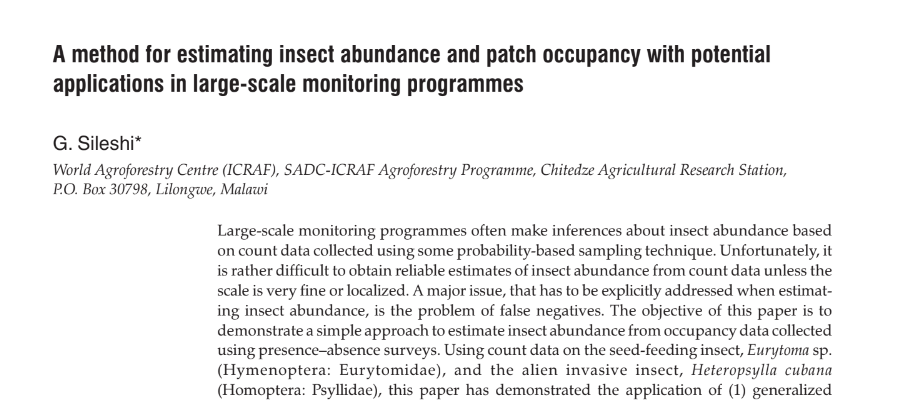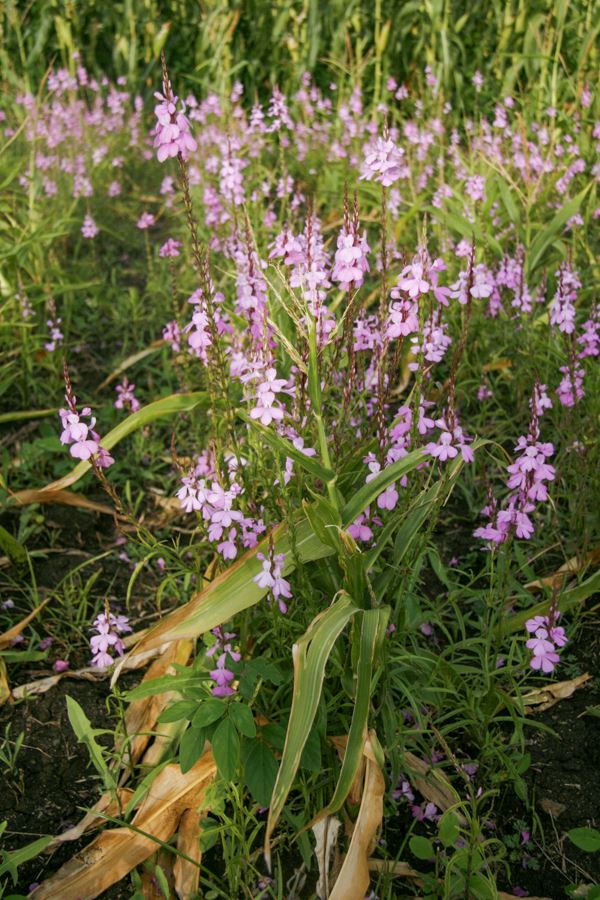Large-scale monitoring programmes often make inferences about insect abundance based on count data collected using some probability-based sampling technique. Unfortunately, it is rather difficult to obtain reliable estimates of insect abundance from count data unless the scale is very fine or localized. A major issue, that has to be explicitly addressed when estimating insect abundance, is the problem of false negatives. The objective of this paper is to demonstrate a simple approach to estimate insect abundance from occupancy data collected using presence–absence surveys. Using count data on the seed-feeding insect, Eurytoma sp. (Hymenoptera: Eurytomidae), and the alien invasive insect, Heteropsylla cubana (Homoptera: Psyllidae), this paper has demonstrated the application of (1) generalized linear models for modelling abundance and detection probability, (2) information criteria for model selection and (3) occupancy-abundance models for precise estimation of insect abundance. Potential applications of this approach in monitoring colonization of sites by alien invasive species and local extinction of species endangered by habitat fragmentation are also indicated.
Authors: Gudeta Sileshi
Contact address: sileshigw@gmail.com
Institution: Addis Ababa University, Department of Plant Biology and Biodiversity Management
Twitter name of the institution: @AddisUniversity
Twitter link: https://x.com/AddisUniversity
Available downloads:


